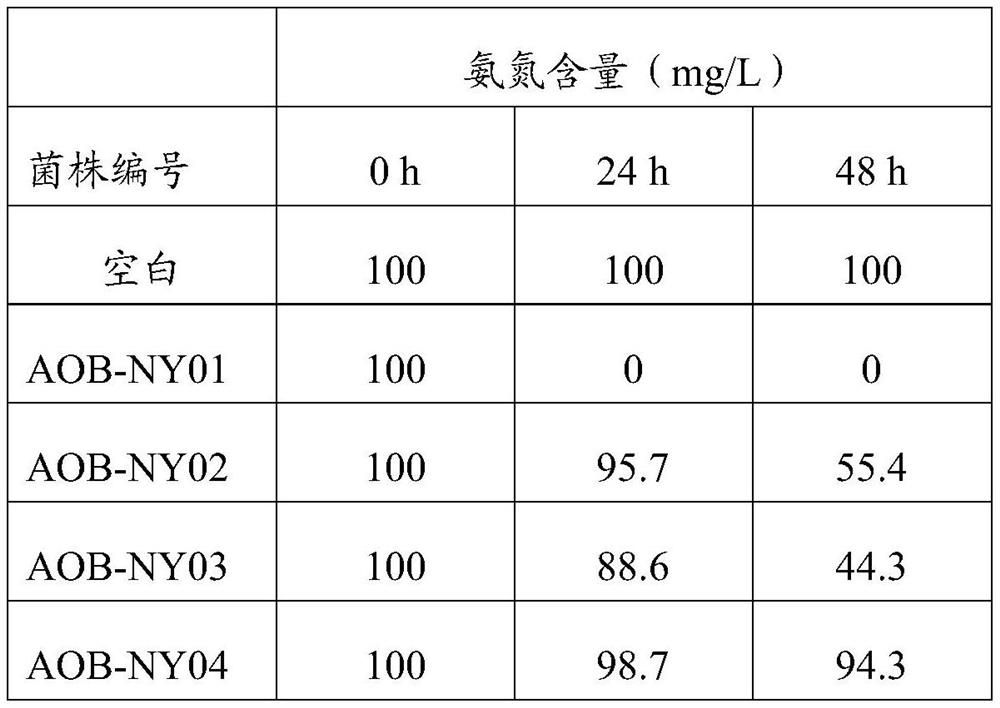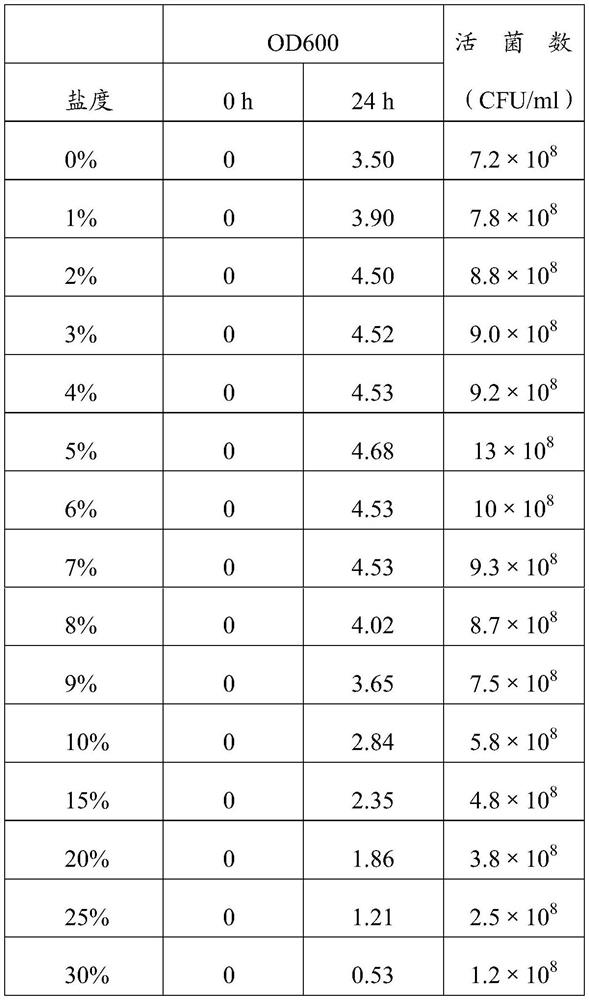Salt-tolerant halomonas strain and application thereof in field of water purification
A technology of Halomonas and strains, applied in the field of environmental microorganisms, can solve problems such as difficulty in exerting advantages and few salt tolerance characteristics
- Summary
- Abstract
- Description
- Claims
- Application Information
AI Technical Summary
Problems solved by technology
Method used
Image
Examples
Embodiment 1
[0037] Example 1. strain screening and performance testing
[0038] 1. Enrichment culture
[0039]Collect sewage from a fermentation plant, absorb 10ml of sewage and transfer to 100ml enrichment medium (ammonium sulfate 0.5g / L, sodium succinate 5.62g / L, Vickers salt 50ml / L, 50g / L sodium chloride, solvent In a 250ml Erlenmeyer flask with water adjusted to pH=7.0), cultivate under the conditions of 30°C and 200r / min for the first enrichment. When the ammonia nitrogen content drops to the lowest level, absorb another 10ml of the primary enrichment solution, add it to a fresh 100ml enrichment medium, and culture at 30°C and 200r / min for the second enrichment. Carry out the third enrichment according to the above enrichment method.
[0040] 2. Primary screening
[0041] The third enrichment solution was diluted to 10 by gradient dilution method -3 、10 -4 、10 -5 and 10 -6 , Take 200 μl of each dilution on a nutrient agar plate, spread it evenly, and then place it upside down ...
Embodiment 2
[0049] Example 2. Detection and Identification of Halomonas AOB-NY01 Strain
[0050] The slant of the AOB-NY01 strain was sequenced by 16S rDNA gene sequence, and the sequencing results were compared in NCBI (https: / / blast.ncbi.nlm.nih.gov / Blast.cgi?PROGRAM=blastn&PAGE_TYP E=BlastSearch&LINK_LOC=blasthome), select The sequence with the highest similarity was used as the species identification result (see the analysis comparison results in Table 2 for details).
[0051] NCBI comparison results of samples in Table 2
[0052] ID No. DNA identification results identities AOB-NY01 Halomonas sp.GT 99%
Embodiment 3
[0053] Example 3. Halomonas tolerance to different environmental conditions
[0054] 1. Growth of Halomonas AOB-NY01 strain at different salinities
[0055] In a sterile environment, inoculate the AOB-NY01 strain into 100ml enriched medium (ammonium sulfate 0.5g / L, sodium succinate 5.62g / L, Vickers salt 50ml / L, 50g / L sodium chloride, solvent be water, adjust pH=7.0) in a 250ml Erlenmeyer flask, cultivate for 48h under 30°C and 200r / min conditions for activation to obtain an activation solution;
[0056] Draw 5 μl of activation solution to inoculate into 100ml of sterilized evaluation medium (ammonium sulfate 0.5g / L, sodium succinate 5.62g / L, Vickers salt 50ml / L, solvent is water, adjust pH=7.0) In a 250ml Erlenmeyer flask, the salinity of the evaluation medium is 0-30%, cultured at 30°C and 200r / min for 24 hours, and the absorbance OD600 is measured respectively (OD600 represents the absorbance value of the solution at 600nm wavelength, which is used to determine Measuring t...
PUM
 Login to View More
Login to View More Abstract
Description
Claims
Application Information
 Login to View More
Login to View More - R&D
- Intellectual Property
- Life Sciences
- Materials
- Tech Scout
- Unparalleled Data Quality
- Higher Quality Content
- 60% Fewer Hallucinations
Browse by: Latest US Patents, China's latest patents, Technical Efficacy Thesaurus, Application Domain, Technology Topic, Popular Technical Reports.
© 2025 PatSnap. All rights reserved.Legal|Privacy policy|Modern Slavery Act Transparency Statement|Sitemap|About US| Contact US: help@patsnap.com



